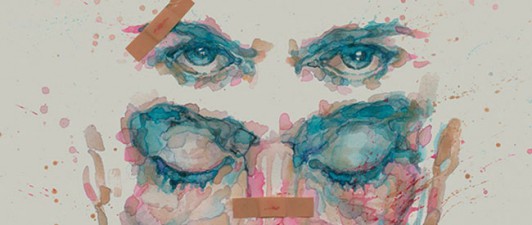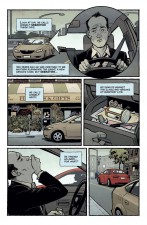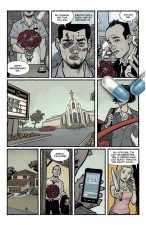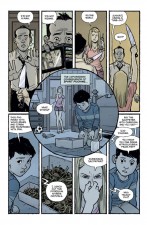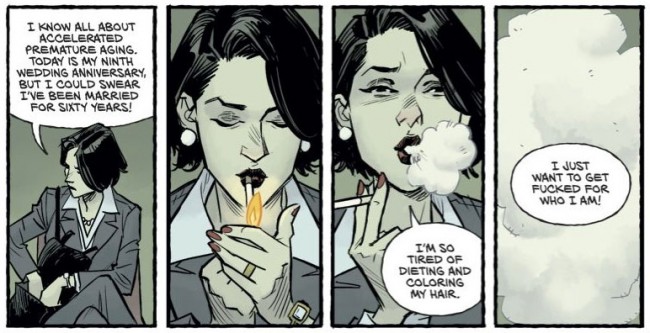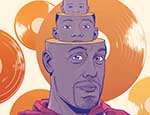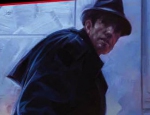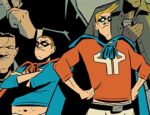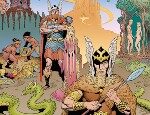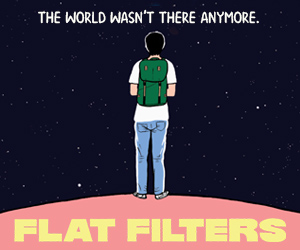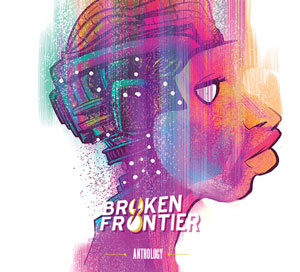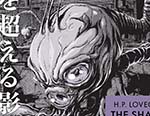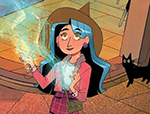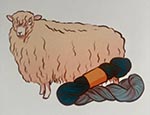Nearly 20 years on from the publication of Chuck Palahniuk’s novel, Tyler Durden has made his long-awaited return in comics form. But are he and the twenty-first century ready for each other?
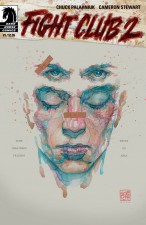 I wonder to what degree I’ll be a fairly average punter for this comic: a bloke on the – ahem – cusp of middle age who got a bit of a buzz from the Fight Club film but never got round to reading the book, and who dipped into the opener of this 10-part comic sequel as much out of curiosity as eager anticipation.
I wonder to what degree I’ll be a fairly average punter for this comic: a bloke on the – ahem – cusp of middle age who got a bit of a buzz from the Fight Club film but never got round to reading the book, and who dipped into the opener of this 10-part comic sequel as much out of curiosity as eager anticipation.
Anyway, since the first round of Chuck Palahniuk’s story (published in 1996 and filmed by David Fincher in 1999), time has also passed for the Narrator of the book (now known as “Sebastian”) and Marla. Ten years on from the events of the original, they find themselves married and with a son, living an unlikely life of picket-fenced conformity.
Sebastian’s life might have regulated a little since the explosive and enigmatic climax of the original Fight Club, but a heavy regime of psychiatric meds and visits to his therapist – Doctor Wrong – don’t seem to be doing much to ease his sense of ennui and disconnection.
Of course, ‘Sebastian’ is only half the story. As the strap line on David Mack’s exquisite painted cover points out, “some imaginary friends never go away”. And, for all his efforts, it probably isn’t that big a spoiler to reveal that Sebastian can’t keep Tyler Durden hidden away for ever – especially when Marla, belying her “estate agent” makeover, yearns for “the crazy man [she] fell in love with” and gives the show-stealing alter ego a helping hand.
When it comes, after a bit of a lingering tease, the inevitable return of Tyler Durden is satisfying. It also sets up an incendiary climax to the issue that finishes on a nasty cliffhanger.
For Palahniuk’s first venture into comics, Cameron Stewart is an inspired choice of collaborator, combining rock-solid storytelling with more imaginative visuals when required. Of particular relevance here, he brings some very strong “acting” out of his characters (although he seems to have also developed the increasingly ubiquitous fondness for Sean Murphy-style “exploding cigar” nose shading).
This is a fairly dense comic, but through a series of 12-panel and even 15-panel pages, the clarity of Stewart’s work – with strong back-up from colourist Dave Stewart and letterer Nate Piekos of Blambot – never wavers. It’s also refreshing that Palahniuk’s comics debut avoids the novelistic tendency for prose to dominate. A certain amount of narration takes place here, but it’s structurally relevant and never threatens to strangle the pages.
There’s further evidence that the material is being thoughtfully marshalled as a comic rather than banged out as a cut-price alternative to another film: the wall between page and reader is broken on occasion by the addition of “real” objects, such as pills and rose petals, to obscure key panels and bits of text (although, adding another layer of formal intrigue, the apparently 3-D objects are actually just meticulously rendered additions by Stewart).
Another interesting creative choice centres on the design of the characters. Given their vivid depiction in the film, it’s hard not to imagine the leads in the guises created by Edward Norton, Helena Bonham Carter and Brad Pitt. However, for the first two at least, they’re barely recognisable in that form here. That’s probably not entirely a bad thing – and readers of the book would have created their own mental images of the characters anyway – but in a sense it does slightly fracture the sense of continuity with the original story.
Along with her sartorial makeover, the character of Marla also seems to have been downgraded a little. Admittedly it’s been a while since I’ve seen the film, but for all her spikes, I remember Marla having a real (and understandable) sense of hurt at the confusing treatment she received from the Narrator. However, devoid of empathy and seemingly propelled by a jet-powered libido, the Marla we meet here seems to have been flattened slightly from her earlier complexity. You could even say she’s more like a man.
My main lingering impression of the Fight Club property is that – like Pulp Fiction a couple of years earlier, for example – it epitomises those things that bloom as the embodiment of ‘cool’ in the excitement of (relative) youth but wither a bit in the harsh light of maturity.
However, while the comic may (so far) lack some of the audacious energy that made the original work such a cult phenomenon, it’s an intelligently executed start to a piece of work that has the potential to stand on its own merits.
Chuck Palahniuk (W), Cameron Stewart (A), Dave Stewart (Colours), Nate Piekos (Letters) • Dark Horse Comics, $3.99, May 27, 2015.





